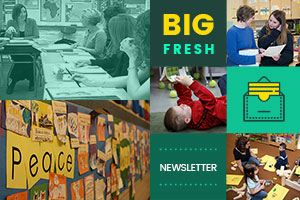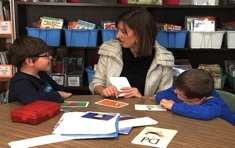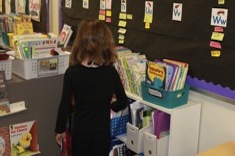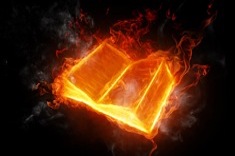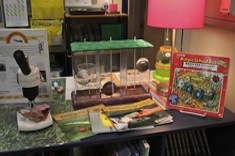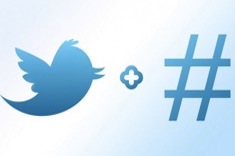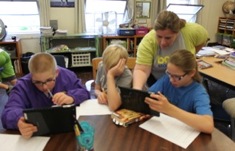Library
Choice Literacy Articles & Videos
The Choice Literacy library contains over 3,000 articles and 900 videos from 150+ contributors. Classic Classroom and Literacy Leadership subscribers have access to the entire library. Content is updated continuously, with five to six new features published each week.
Latest Content
The Big Fresh January 10, 2015 What I’ve Read
Adolescent literacy is the focus of this week’s Big Fresh.
Letter Writing with High School Students
Kim Campbell instills a love for a lost art in her high school students.
Anchor Lesson: Analyzing a Poem
Leslie Lloyd teaches the second part of her anchor lesson to third graders. In this installment, they look at literal and figurative language in the Donald Graves poem "Bully."
10 Ways to Publish Student Work
Erin Ocon compiles a list of the ways she publishes writing of her teen students.
Using Lord of the Flies to Teach Argument
Gretchen Schroeder has suggestions for using short texts and close reading to help students comprehend The Lord of the Flies.
The Big Fresh January 3, 2015 Cookies and Coaching
We consider young readers in this week’s Big Fresh.
Kindergarten Small Group: Concepts of Print
Clare Landrigan leads a "quick and frequent" small group that integrates phonemic awareness activities with assessment.
Wyatt’s Running Record
Bitsy Parks completes a running record with first grader Wyatt as part of our running record series.
Questions and Picture Books
Katie DiCesare suggests some mentor texts for fostering curiosity in young readers.
Nine Picture Books for Teaching Mindfulness
Kim Yaris and Jan Burkins conclude their series on integrating children’s literature and mindful teaching.
Picture Books or Beginning Readers?
Many beloved characters from picture books are showing up in beginning readers, and in the process can lose a lot of their appeal. Shari Frost provides teachers with criteria for choosing between picture books or beginning readers.
The Big Fresh December 27, 2014 Happiness of Pursuit
Goals are the focus of this week’s Big Fresh.
Anchor Lesson: Setting Goals
Leslie Lloyd begins an anchor lesson by setting a goal with her third graders. This is the first video in a four-part series.
New Words for the New Year
Jan Burkins and Kim Yaris have a fresh take on goals for the new year.
How to Get a Book to Catch Fire
If your goal is to get teens more excited about independent reading, Gretchen Schroeder has suggestions to help.
Explore: Time for Nonfiction
Andrea Smith uses Explore Time with her fourth graders to build interest in nonfiction.
The Big Fresh December 13, 2014 What Makes a Writer?
Using Twitter and other online resources in classrooms is the focus of this week’s Big Fresh.
The Power of a Hashtag
Katharine Hale looks at the value of hashtags in helping students harness Twitter in a reading community.
Twitter in the Classroom
Katherine Sokolowski and her students find Twitter is an essential element in their fifth-grade reading workshop.
Choosing the Right Tool for Your Message
Julie Johnson has advice on classroom uses of tech resources.
The Big Fresh December 6, 2014 Watchers
We look at how to integrate more visuals into minilessons in this week’s Big Fresh.
Don’t Judge a Book by Its Cover: Teaching Book Choice Strategies to Middle Schoolers
Katie Doherty helps students make choices for independent reading.
Classroom Management and Student Responsibility
Katherine Sokolowski is discouraged when she observes that some students are off-task during literacy workshops. She decides a reflection sheet will be a useful weekly scaffold to support independent monitoring of behavior.
Running Record: Kaenon
Bitsy Parks completes a running record with first grader Kaenon.
Organizing Craft Minilessons
Mary Helen Gensch concludes her series on crafting your own minilessons with tips on organizing and storing your plans.
The Big Fresh November 29, 2014 Cheerfully Indifferent
We look at how to integrate more visuals into minilessons in this week’s Big Fresh.
Jillian’s Running Record
Bitsy Parks completes a running record with first grader Jillian. This is part of our new running records series.
Integrating Short Videos into Minilessons
Katherine Sokolowski gives advice on how to add video to your literacy minilessons.
How to Notice: Mining Children’s Books for Craft Minilessons
This is the second installment in our new series on creating your own writer’s craft minilessons.
The Big Fresh November 22, 2014 Not Very Entertaining
Formative assessment is the focus of this week’s Big Fresh.
Browse Content By
Type
Category
- Assessment Tools
- Big Fresh Archives
- Booklists
- Choice Numeracy
- Classroom Design
- Common Core
- Community Building
- Conferring
- Content Literacy
- Digital Literacy
- English Language Learners
- Equity
- Family Relations
- Free Samples
- Guiding Groups
- Leadership
- Literacy Coaches
- Mentor Texts
- Minilessons
- New Teacher Mentors
- Podcasts
- Poetry
- Quote Collections
- Reading Strategies
- Self Care
- Struggling and Striving Learners
- Talking and Listening
- Teacher Study Groups
- Teaching Reading
- Teaching Writing
- Word Study and Vocabulary
Author
- Melissa Quimby
- Nawal Qarooni
- Gwen Blumberg
- Julie Cox
- The Lead Learners
- Hannah Tills
- Josie Stewart
- Ruth Metcalfe
- Mallory Messenger
- Becca Burk
- Jodie Bailey
- Vivian Chen
- Mary Brower
- Tiffany Abbott Fuller
- Stephanie Affinito
- Ruth Ayres
- Leigh Anne Eck
- Heather Fisher
- Shari Frost
- Julie Johnson
- Suzy Kaback
- Gigi McAllister
- Shirl McPhillips
- Melanie Meehan
- Cathy Mere
- Debbie Miller
- Tara Barnett and Kate Mills
- Tammy Mulligan
- Dana Murphy
- Bitsy Parks
- David Pittman
- Brenda Power
- Heather Rader
- Matt Renwick
- Mandy Robek
- Christy Rush-Levine
- Gretchen Schroeder
- Jen Schwanke
- Brian Sepe
- Katherine Sokolowski
- Stella Villalba
- Jennifer Vincent
Grade Level
Choice Literacy Membership
Articles
Get full access to all Choice Literacy article content
Videos
Get full access to all Choice Literacy video content
Courses
Access Choice Literacy course curriculum and training

